King Charles II of Spain suffered from numerous physical and cognitive disabilities due to generations of inbreeding, and since his genetics rendered him infertile as well, the Spanish Habsburg dynasty came to an end when he died in 1700.
King Charles II of Spain was the last Habsburg ruler of the country, and perhaps thankfully so. Per his contemporaries, he was “so ugly as to cause fear” — though it was through no fault of his own.
Throughout his life, Charles II suffered from various physical and mental health issues ranging from disfigurement to epilepsy. The reason for this? At least 16 generations of inbreeding to “maintain” the royal bloodline.
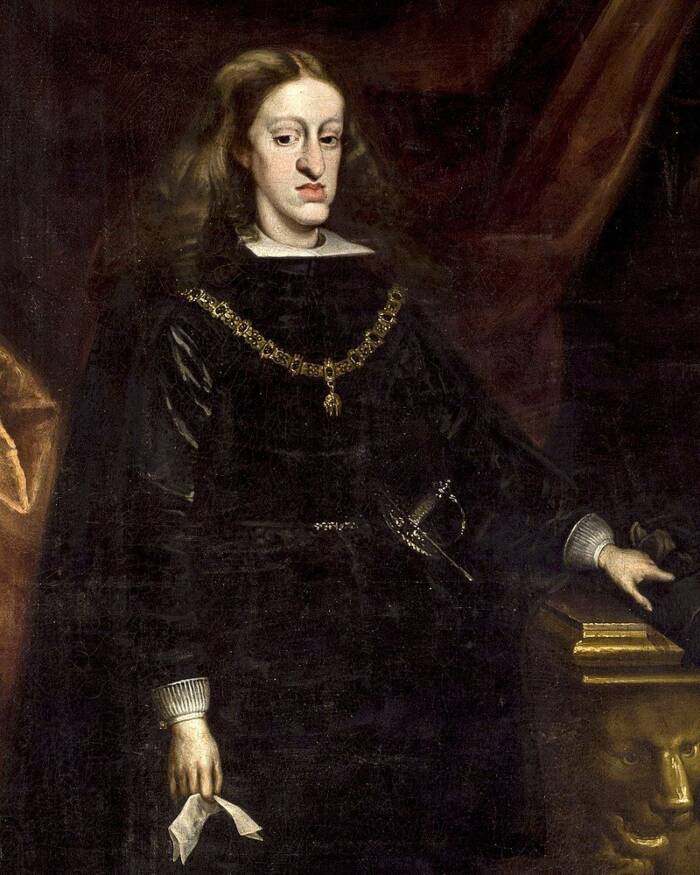
Public DomainA painting of Charles II of Spain by Juan Carreño de Miranda, circa 1685.
This inbreeding also left Charles impotent, meaning that he could not produce any children, which effectively brought an end to his family’s dynasty. His story is a tragic one and a cautionary tale that shows the true cost of trying to preserve a bloodline through any means necessary.
Charles II Of Spain’s Troubles Begin At A Young Age
Charles II of Spain was born November 6, 1661, and became king in 1665 at the young age of three. His mother, Mariana of Austria, ruled as regent for 10 years until Charles was a teenager and able to lead on his own.
During those 10 years, Mariana worked hard to preserve the Habsburgs’ control over their realm as tensions ramped up with ambitious French king Louis XIV.
While the Habsburgs occupied the Spanish throne, the family originally hailed from Austria and still maintained control over the Netherlands, Belgium, and parts of Germany — all lands that Louis XIV also sought to conquer. Unfortunately, Charles II was little help in that regard.
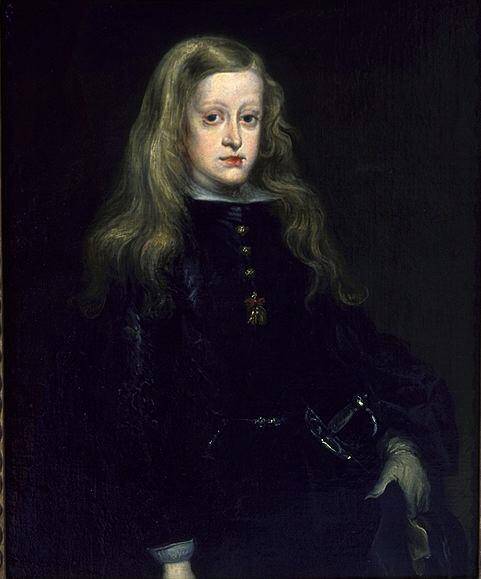
Public DomainCharles II as a child by Juan Carreño de Miranda, circa 1673.
That’s not to say Charles actively destroyed the Spanish Empire — far from it. He was born into an already tumultuous situation, and by the time of his death in 1700, his kingdom was still largely intact.
But a litany of health issues plagued Charles throughout his life, though not quite to the extent that various rumors suggest.
How Charles II Was Impacted By His Illnesses
Charles II was prone to illness, but the extent to which this affected his daily life may have been exaggerated.
Contemporary accounts of his reign paint a different picture than that of a feeble, incompetent monarch. He was physically active and spent much of his free time hunting, for example, but he was also prone to intense bouts of depression.
Many historians have suggested that Charles II of Spain had low intelligence, but accounts from both his own advisers and foreign diplomats seemed to imply that he was perfectly capable mentally.
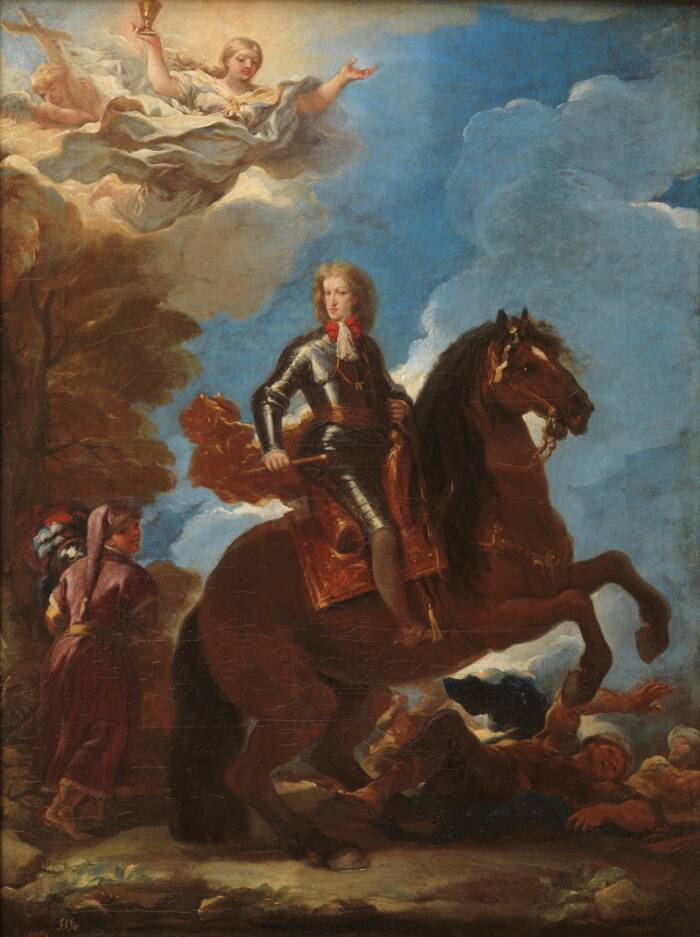
Public DomainA portrait of Charles II on horseback by Luca Giordano, circa 1693.
Charles II was certainly shy, self-conscious, and depressed based on accounts from the time, but foreign diplomats often noted that he was generally kind and often welcomed them himself when they visited.
It should also be noted that his sister, Margaret Theresa, did not share the same health issues as Charles despite both of the siblings resulting from generations of inbreeding. Margaret Theresa, in fact, had a child of her own, Maria Antonia, who did not experience Charles’ health problems either.
Still, Charles II was left impotent and unable to produce an heir, a fact which is often attributed to inbreeding. And Charles II’s infertility inevitably led to questions over the succession of his throne — and even to war.
How Much Did Inbreeding Doom Charles II’s Rule?
A 2009 National Geographic report identifies inbreeding as the most significant contributor to the downfall of the Habsburg dynasty based on findings by the University of Santiago de Compostela’s Gonzalo Alvarez.
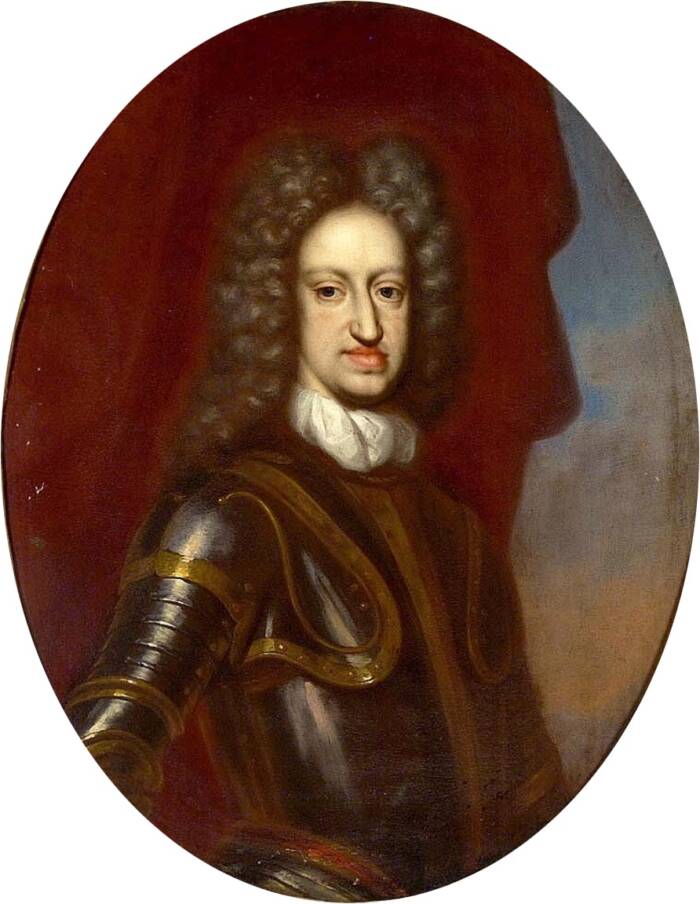
Public DomainCharles II had the signature “Habsburg jaw” that came to be attributed to members of his family.
Alvarez examined the royal line’s history through 16 generations, studying more than 3,000 people for what he called the “inbreeding quotient,” a number that measures the probability that a person with two identical copies of a gene inherited both from the same ancestor.
By the time of Charles II’s birth, Alvarez stated that he would have carried identical copies for more than a quarter of his genes, which may explain why the king had such poor health. Alvarez also suggested that Charles II may have suffered from both combined pituitary hormone deficiency and distal renal tubular acidosis, although these diagnoses are pure speculation.
In any case, Alvarez found that inbreeding would have decreased the Habsburgs’ chances of survival by as much as 18 percent by Charles II’s lifetime.
This coincides with another study a decade later, which examined the distinctive “Habsburg jaw” common to monarchs in the family.

Public DomainCharles I of Spain, also known as Charles V of the Holy Roman Empire.
The study found a correlation between Habsburgs with higher inbreeding coefficients sporting the signature “Habsburg jaw,” noting that Philip IV, Charles I, and Charles II each exhibited about five of the seven identifiable features of mandibular prognathism, or a protruding jaw.
Charles II was also known to have a rather large tongue, to the degree that it was difficult to understand him when he spoke.
In fact, in Spain Under Charles the Second, British envoy Alexander Stanhope described the king as having “a ravenous stomach” and noted that he “swallows all he eats whole, for his nether jaw stands so much out, that his two rows of teeth cannot meet.”
Health issues aside, however, it would ultimately be Charles II’s inability to produce an heir that doomed his bloodline.
Charles II Failed To Produce An Heir — And Started A War As A Result
Charles II of Spain was married twice in his short life. His first marriage was to Marie Louise d’Orléans, but their relationship came to an abrupt and tragic end in February 1689, when Marie Louise died from what many modern doctors believe was appendicitis.
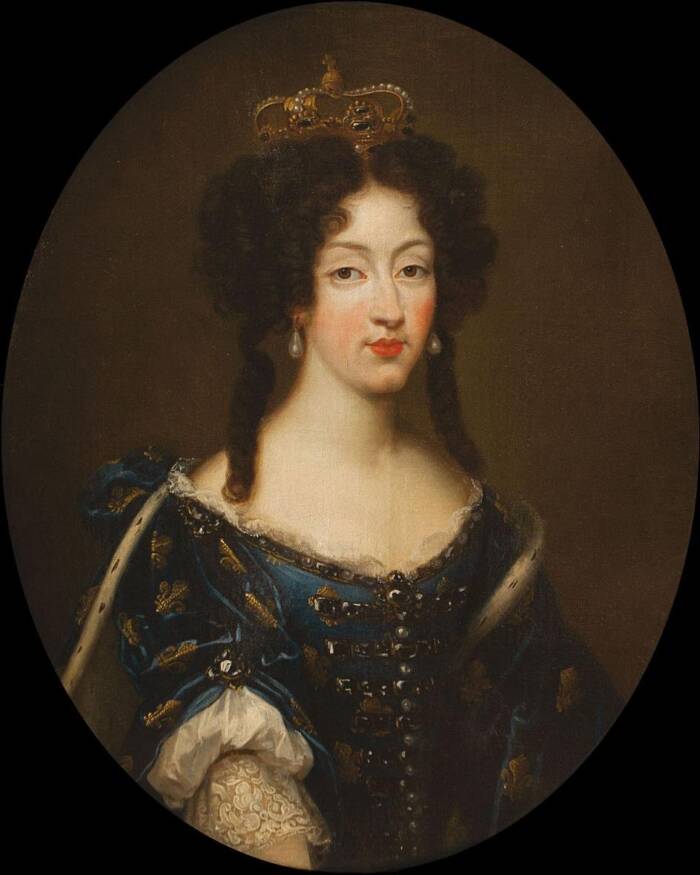
Public DomainMarie Louise d’Orléans, Charles II of Spain’s first wife.
But even though he was just 28 years old, it became clear that Charles II’s declining health wasn’t providing him much more time. Procuring him an heir — and therefore a clear successor to the throne — became a matter of great importance.
By August of that same year, he was married to Maria Anna of Neuburg. Maria Anna, sister-in-law to Holy Roman Emperor Leopold, was also from a family known for its fertility. She was likely paired with Charles II in hopes that she could produce an heir for the king.
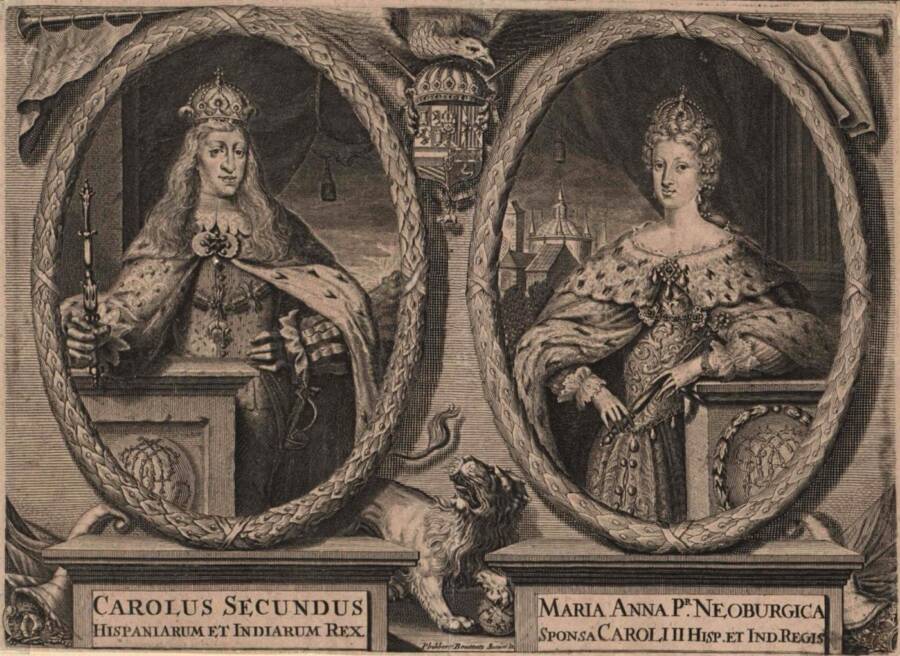
Public DomainA portrait of Charles II and Maria Anna by an unknown artist, circa 1689.
Of course, Maria Anna and Charles II did not have any children together, as Charles was effectively incapable of doing so — his autopsy later revealed that his one remaining testicle was atrophied. In fact, the doctor who performed the autopsy wrote that his body “did not contain a single drop of blood; his heart was the size of a peppercorn; his lungs corroded; his intestines rotten and gangrenous; he had a single testicle, black as coal, and his head was full of water.”
After Charles II’s death in November 1700, the question of succession was more pressing than ever before. But rather than reaching a peaceful conclusion to this tragic tale, a 13-year conflict known as the War of Spanish Succession began — and the Spanish Habsburgs’ reign was over.
After reading about the unfortunate life of Charles II of Spain, check out the story of the princes in the tower, the sons of King Edward IV who mysteriously vanished. Then, read about William the Conquerer, the king whose corpse exploded during his funeral.





